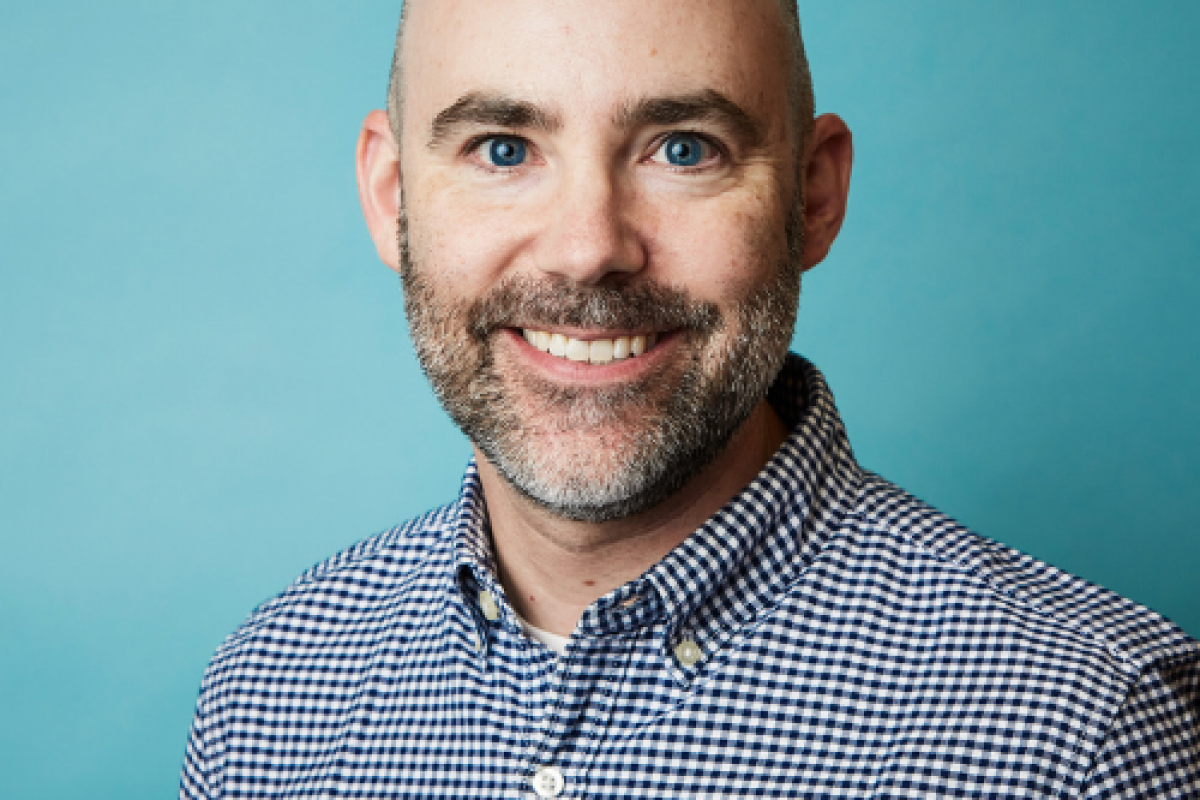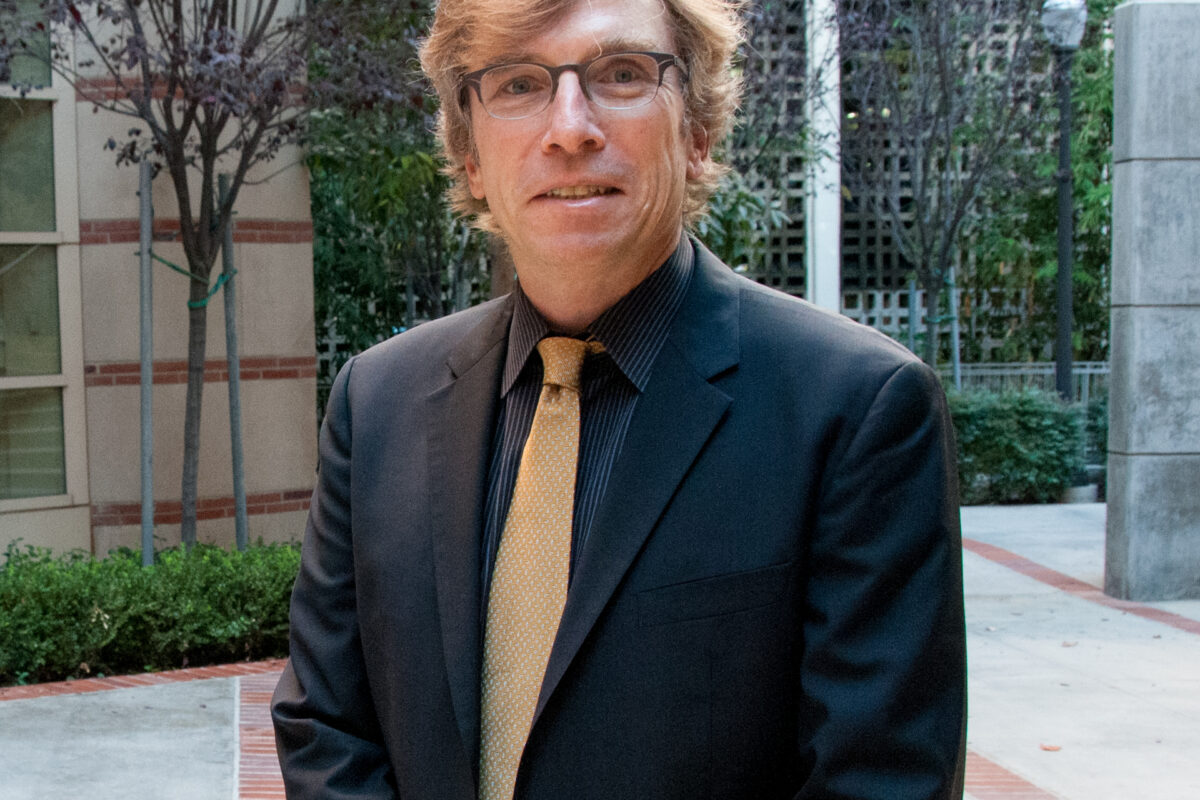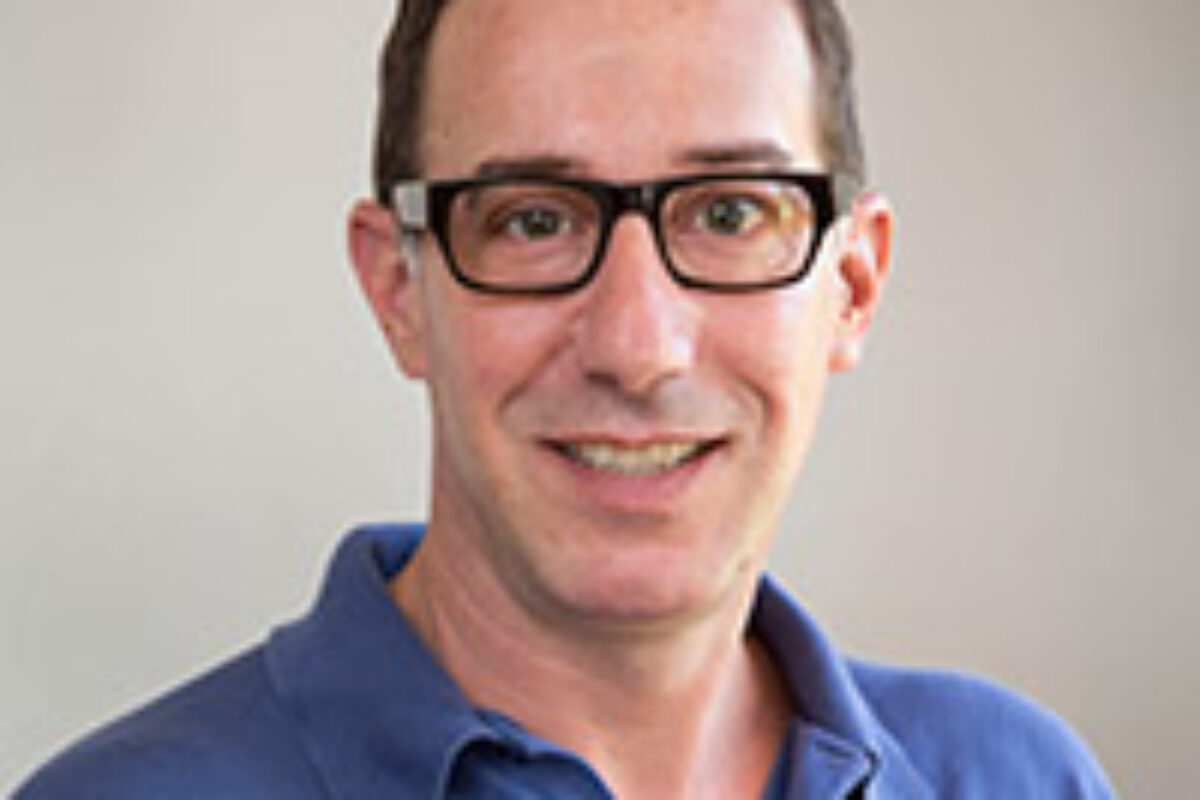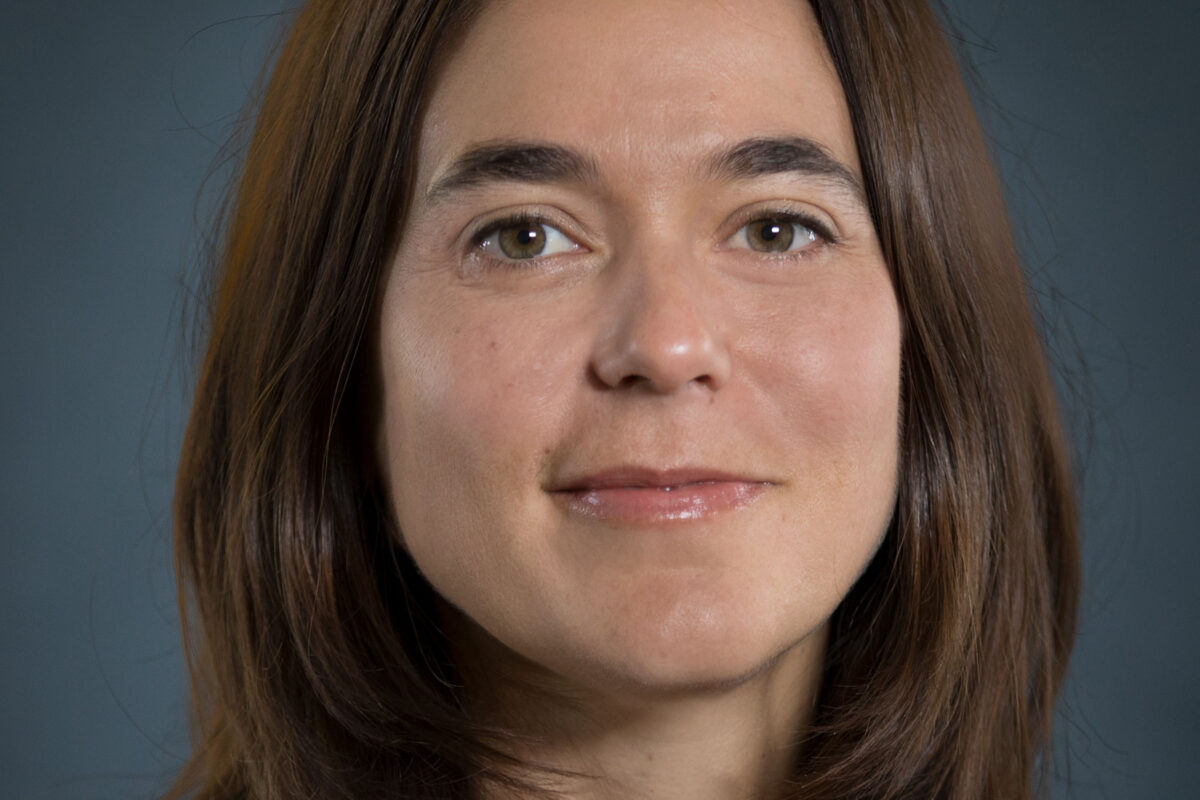Christine Samuel-Nakamura worked for multiple years in several Indian Health Service (IHS) and tribal hospitals/clinics as a nationally board certified Family Nurse Practitioner (FNP). A portion of her clinical work focused on chronic health conditions such as diabetes, renal failure, autoimmune disorders, and cancer. Her clinical work with these chronic health conditions led her to contemplate whether there is a connection between these chronic conditions and the community environment. These hypotheses ultimately led to her research question and work examining environmental contamination from U and other heavy metals. Dr. Samuel-Nakamura received her doctorate from UCLA and her dissertation study focused on U and associated heavy metals in the food chain on the Diné (Navajo) reservation. Her postdoctoral work examined U and heavy metals in a common AI herbal tea plant. Before joining the UCLA SON, Dr. Samuel-Nakamura was a Lecturer in the UCLA Interdepartmental Program in American Indian Studies (IDP-AIS). She is a member of the Diné Nation.
Kevin Riley is the Director at LOSH. With over a decade of experience conducting worker- and community-engaged research and worker training initiatives, he leads LOSH efforts to investigate job hazards among workers in various industries and sectors, with the goal of informing public policy and improving workplace health and safety programs. His work has examined the injury experiences of workers in the low-wage labor market, community-level associations between heat-related hospitalizations and outdoor work, and workers’ compensation eligibility and access among residential day laborers and domestic workers. His interests also include the history of occupational safety and health policies and activism.
Kevin serves as principal investigator for the Western Region Universities Consortium (WRUC), a partnership of four university-based hazardous materials (HAZMAT) training programs funded by the National Institute of Environmental Health Sciences (NIEHS) Worker Training Program. In this role, he has led training initiatives on infectious disease hazards for healthcare workers in California as well as several projects to evaluate the impacts of HAZMAT training on workers and managers.
He holds a PhD in sociology and a master’s in public health, both from UCLA.
Additional Publications:
Kevin Riley, Jennifer Nazareno, and Sterling Malish. 24-Hour Care: Work and Sleep Conditions among Migrant Filipino Live-in Caregivers in Los Angeles. American Journal of Industrial Medicine, 59(12), 1120-1129, 2016.
Kevin Riley and Doug Morier. Patterns of Work-Related Injury and Common Injury Experiences of Workers in the Low-Wage Labor Market. Report to the Commission on Health and Safety and Workers’ Compensation, California Department of Industrial Relations. Los Angeles: UCLA Labor Occupational Safety and Health Program. 2015.
Kevin Riley, Carol Rice, Mitchel Rosen, Craig Slatin, Linda Alerding, Jane Fleishman, B. Louise Weidner, and Linda Delp. Managers’ Perceptions of the Value and Impact of HAZWOPER Worker Health and Safety Training. American Journal of Industrial Medicine, 58(7): 780-787, 2015.
Linda Delp and Kevin Riley. Worker engagement in the health and safety regulatory arena under changing models of worker representation. Labor Studies Journal, 40(1): 54-83, 2015.
Kevin Riley. Driving on speed: Long-haul truck drivers and amphetamines in the postwar period. Labor: Studies in Working-Class History of the Americas, 11(4): 63-90, 2014.
Linda Delp, Kevin Riley, Sarah Jacobs, Diane Bush, Kathy Kirkland, Ingrid Denis, Matt London, and Robert Harrison. Shaping the future: Ten years of the Occupational Health Internship Program. New Solutions, 23(2) 253-281, 2013.
Kevin Riley. Health and safety. Entry for SAGE Sociology of Work Encyclopedia, Vicki Smith and J. Geoffrey Golson (eds.), 2013.
Kevin Riley, Linda Delp, Deogracia Cornelio, and Sarah Jacobs. From agricultural fields to urban asphalt: The role of worker education to promote California’s Heat Illness Prevention Standard. New Solutions, 22(3) 297-323, 2012.
Paul Landsbergis, Joseph Grzywacz, Anthony LaMontagne, Carles Muntaner, Joan Benach, Jane Lipscomb, Jeffrey Johnson, Peter Schnall, Kevin Riley, Ellen Rosskam, and Jennifer Zelnick. Work Organization, Job Insecurity, and Occupational Health Disparities. Issue Paper for Discussion at the Eliminating Health and Safety Disparities at Work Conference, Chicago, Illinois, September 14 and 15, 2011.
Kevin Riley and Lauren Appelbaum. OSHA at 40: Looking Back, Looking Ahead. UCLA Institute for Research on Labor and Employment, Research & Policy Brief No. 8, April 2011.
Dr. Michael Jerrett is an internationally recognized expert in Geographic Information Science for Exposure Assessment and Spatial Epidemiology. He is professor and chair of the Department of Environmental Health Sciences in the Fielding School of Public Health at UCLA. Dr. Jerrett earned his PhD in Geography from the University of Toronto (Canada). For the past 15 years, Dr. Jerrett has researched how to characterize population exposures to air pollution and built environmental variables, how to understand the social distribution of these exposures among different groups (e.g., poor vs. wealthy), and how to assess the health effects from environmental exposures. Over the decade, Dr. Jerrett has also studied the contribution of the built and natural environment to physical activity, behavior and obesity. In 2009, the United States National Academy of Science appointed Dr. Jerrett to the Committee on “Future of Human and Environmental Exposure Science in the 21st Century.” The committee recently concluded its task with the publication of a report entitled “Exposure Science in the 21st Century: A Vision and a Strategy.” In 2013, the U.S. Environmental Protection Agency appointed Dr. Jerrett to the Clean Air Scientific Advisory Sub-Committee for Nitrogen Oxides. In 2014, Dr. Jerrett was named to the Thomson Reuters List of Highly Cited Researchers, indicating he is in the top 1% of all authors in the fields of Environment/Ecology in terms of citation by other researchers.
About:
Miriam Marlier is an Assistant Professor of Global Environmental Change in the Environmental Health Sciences Department at the UCLA Fielding School of Public Health. She is an interdisciplinary environmental scientist with broad interests in examining interactions between environmental change and public health using remote sensing data and interdisciplinary modeling techniques. Some of her recent research projects include forecasting the influence of different conservation and development policies in Indonesia on fire emissions, air pollution, and regional public health outcomes, measuring the effect of agricultural waste burning on air quality in India, understanding the physical climate drivers of fire activity in the western U.S., and using remote sensing data to improve responses to natural disasters. Dr. Marlier previously worked as an Associate Physical Scientist at the RAND Corporation.
Recent Publications
Impacts of COVID-19 response actions on air quality in China
Marlier ME, Xing J, Zhu Y, Wang S. Impacts of COVID-19 response actions on air quality in China. Environmental Research Communications. 2020 Jul 17;2(7):075003.
Selected Publications
Marlier, M.E., T. Liu, K. Yu, J.J. Buonocore, S.N. Koplitz, R.S. DeFries, L.J. Mickley, D.J. Jacob, J. Schwartz, B.S. Wardhana, and S.S. Myers. “Fires, smoke exposure, and public health: An integrative framework to maximize health benefits from peatland restoration.” GeoHealth. 3: 178-189. 2019.
Liu, T., M.E. Marlier, R.S. DeFries, D.M. Westervelt, K.R. Xia, A.M. Fiore, L.J. Mickley, D.C. Cusworth, and G. Milly. “Seasonal impact of regional outdoor biomass burning on air pollution in three Indian cities: Delhi, Bengaluru, and Pune.” Atmospheric Environment. 172: 83-92. 2018.
Marlier, M.E., M. Xiao, R. Engel, B. Livneh, J.T. Abatzoglou, and D.P. Lettenmaier. “The 2015 drought in Washington State: A harbinger of things to come?” Environmental Research Letters. 12: 114008. 2017.
Marlier, M.E., A.S. Jina, P.L. Kinney, and R.S. DeFries. “Extreme Air Pollution in Global Megacities.” Current Climate Change Reports. 2(1): 15–27. 2016.
Koplitz, S.N., L.J. Mickley, M.E. Marlier, J.J. Buonocore, P.S. Kim, T. Liu, M.P. Sulprizio, R.S. DeFries, D.J. Jacob, J. Schwartz, M. Pongsiri, and S.S. Myers. “Public health impacts of the severe haze in Equatorial Asia in September-October 2015: demonstration of a new framework for informing fire management strategies to reduce downwind smoke exposure.” Environmental Research Letters. 11 (9): 094023. 2016.
Marlier, M.E., R.S. DeFries, P.S. Kim, S.N. Koplitz, D.J. Jacob, L.J. Mickley, and S.S. Meyers. “Fire emissions and regional air quality impacts from fires in oil palm, timber, and logging concessions in Indonesia.” Environmental Research Letters. 10(8): 085005. 2015.
Marlier, M.E., R.S. DeFries, P.S Kim, D.L.A. Gaveau, S.N. Koplitz, D.J. Jacob, L.J. Mickley, B.A. Margono, and S.S. Myers. “Regional air quality impacts of future fire emissions in Sumatra and Kalimantan.” Environmental Research Letters. 10(5): 054010. 2015.
Marlier, M.E., R. DeFries, D. Pennington, E. Nelson, E.M. Ordway, J. Lewis, S.N. Koplitz, and L.J. Mickley. “Future fire emissions associated with projected land use change in Sumatra.” Global Change Biology. 21(1): 345–62. 2015.
Marlier, M.E., A. Voulgarakis, D.T. Shindell, G. Faluvegi, C.L. Henry, and J.T. Randerson. “The role of temporal evolution in modeling atmospheric emissions from tropical fires.” Atmospheric Environment. 89: 158-68. 2014.
Marlier, M.E., R.S. DeFries, A. Voulgarakis, P.L. Kinney, J.T. Randerson, D.T. Shindell, Y. Chen, and G. Faluvegi. “El Niño and health risks from landscape fire emissions in Southeast Asia.” Nature Climate Change. 3: 131-36. 2013.
David Eisenman, MD, MSHS, is an associate professor at the David Geffen School of Medicine at UCLA and has a joint appointment at the UCLA Fielding School of Public Health where he directs the Center for Public Health and Disasters. Dr. Eisenman is also an Associate Natural Scientist at RAND. Dr. Eisenman lives and surfs in Marina del Rey, California.
Select Publications:
Cushing LJ, K Vavra-Muser, K Chau, M Franklin, JE Johnston, “Flaring from unconventional Oil and Gas Development and Birth Outcomes in the Eagle Ford Shale in South Texas”, Environmental Health Perspectives (2020) 128(7): 770031-770039, PMCID: PMC7362742, doi: 10.1289/EHP6394
Johnston, J.E., K. Chau, M. Franklin, L. Cushing, “Environmental Justice Dimensions of Oil and Gas Flaring in South Texas: Disproportionate Exposure among Hispanic communities”, Environmental Science & Technology (2020), PMID: 32338877, doi: 10.1021/acs.est.0c00410
Johnston, J., and Cushing, L., “Chemical exposures, health, and environmental justice in communities living on the fenceline of industry”, Current Environmental Health Reports (2020), PMCID: PMC7035204, doi: 10.1007/s40572-020-00263-8
Yang, J., L. Cushing, R. Morello-Frosch, “An Equity Analysis of Clean Vehicle Rebate Programs in California”, Climatic Change (2020) doi: 10.1007/s10584-020-02836-w
Cushing L., Blaustein-Rejto D., Wander M., Pastor M., Sadd J., Zhu A., Morello-Frosch R. “Carbon trading, co-pollutants, and environmental equity: Evidence from California’s cap-and-trade program (2011–2015)”, PLOS Medicine (2018) 15(7): e1002604, PMCID: PMC6038989, doi: 10.1371/journal.pmed.1002604
Cushing, L., J. Faust, L. August, R. Cendak, W. Wieland and G. Alexeeff, “Racial/ethnic disparities in cumulative environmental health impacts in California: evidence from a state-wide environmental justice screening tool (CalEnviroScreen 1.1)”, American Journal of Public Health (2015) 105(11): 2341-2348, PMCID: PMC4605180, doi: 10.2105/AJPH.2015.302643
Cushing, L., R. Morello-Frosch, M. Wander and M. Pastor, “The Haves, the Have-nots, and the Health of Everyone: The Relationship between Social Inequality and Environmental Quality”, Annual Review of Public Health (2015), 18(36): 193-209, PMID:25785890, doi: 10.1146/annurev-publhealth-031914-122646






